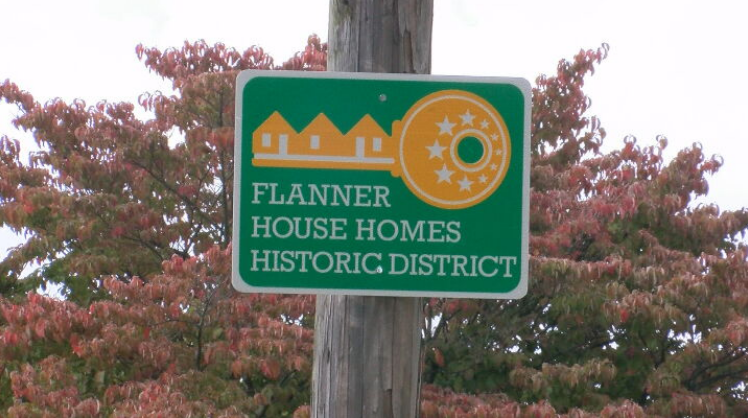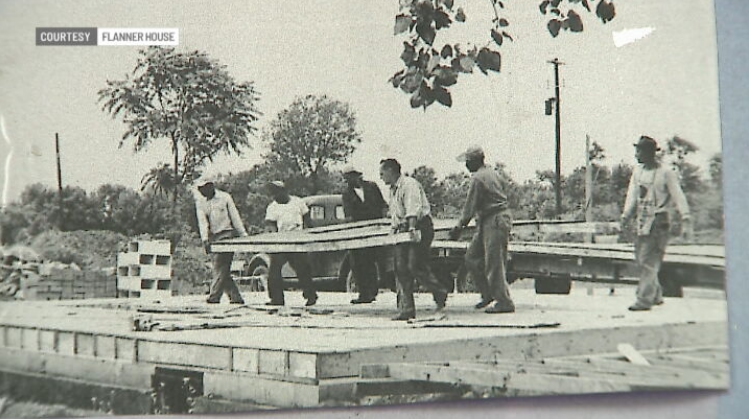Flanner House marks 125 years of service with continued work to fulfill mission
INDIANAPOLIS (WISH) — The Flanner House opened its doors 125 years ago this year with the focus of support the needs of a growing Black community.
The Great Migration sent thousands of African Americans north in the years after slavery, and many settled in Indianapolis.
The Flanner House started as a tool to promote the moral, social and physical well-being of the African American community. In the 1940s, the nonprofit started building what would be known as Flanner Homes. The first of those homes built near Crispus Attucks High School. With many Black soldiers unable to cash in on the Servicemen’s Readjustment Act of 1944, commonly known as the GI Bill, of those who did, many found their homes around Indianapolis.
The Flanner Houses were built on more than just wood. It’s a foundation laid with pride, welcoming in a group of people who made a lot of a little.
“The neighborhood was mostly African American when I was growing up,” said state Rep. Vanessa Summers, a Democrat from Indianapolis.
Summers was raised in a Flanner Homes neighborhood. “I grew up in the Flanner Homes. Flanner Homes were homes that families built, and they got sweat equity, low-income loans for working on their own homes.”
Summers is part of that foundation because her father helped lay it. Like many other between the 1930 and the 1950s, he helped build the family home with sweat equity. She reflects on the joys of her youth.
“If there were 20 kids on our street all day long, that’s just how it went.”
Today, she walks in his shoes, holding his former seat in the Statehouse while living on the same block. “My dad got it before they (her godparents) passed. They made arrangements to hand it over to him. So, my sister lives in our house that I grew up in, and I live in my godparent’s house, and we share a driveway.”
The Flanner House opened its doors in 1898, focused on servicing a growing population of Black people who’d migrated north from Southern states. Some of those families had been formally enslaved. The Flanner House also focused on moving people out of positions of crisis and vulnerability to positions of self-reliance and self-sufficiency.
Brandon Cosby, executive director of The Flanner House, said, “Fleeing the South, they got here, and, while things weren’t necessarily great here, they were better than where they come from. So, folks began to settle, and there were liberal, open-minded, very progressive, white folks who saw what was happening and was outraged by it. One of whom happened to be the wife of Frank Flanner.”
Initially, The Flanner House served as a sort of community center, offering training, education, food co-ops and much more. It evolved into Flanner Homes Inc.
“Less than 10% of all of the Black men who enlisted to serve in World War II, who were promised the benefits of the GI Bill, actually got them. Less than 10%,” Cosby said. “About 80% of all of the Black folks who did get them actually got them here in Indianapolis because of the work of Flanner House,” Cosby said.
The Flanner House was built on the idea that people would reach a place of solvency for the social challenges, and the institutional and systemic racism. That pattern of work continued in the following decades, as that goal hasn’t been reached.
Cosby said, “Quite frequently when I’m asked to come and speak, the good thing about Flanner House is that we’ve been in the business of meeting the unmet needs of the Black community for 125 years. The problem with a Flanner House is that we’ve been in the business of meeting the unmet needs of the Black community for 125 years.”
But, those foundational tools keep the work alive, pushing pass the impacts of deep-seeded racism from redlining and home loan access to provide long-awaited opportunity.
“So, there were people who could financially afford to own a home, who had the credit to qualify for financing to own a home but had never attempted it because of the stories they had been told about what happened to their parents and their grandparents,” Cosby said.
One of The Flanner House’s latest ventures of improving home ownership rates, Cosby said, is creating a foundation for family and generational wealth that had been absent for generations.
Summers says, as a child, the neighborhood was just the neighborhood. Today, she sees its value much more clearly. “I realized that later on. I just know that I was given a rich history and a rich childhood.”
The Flanner House executive director says, up next, it’ll be leaning more into its agricultural program through its greenhouse operation while also working to improve mental health care access.

